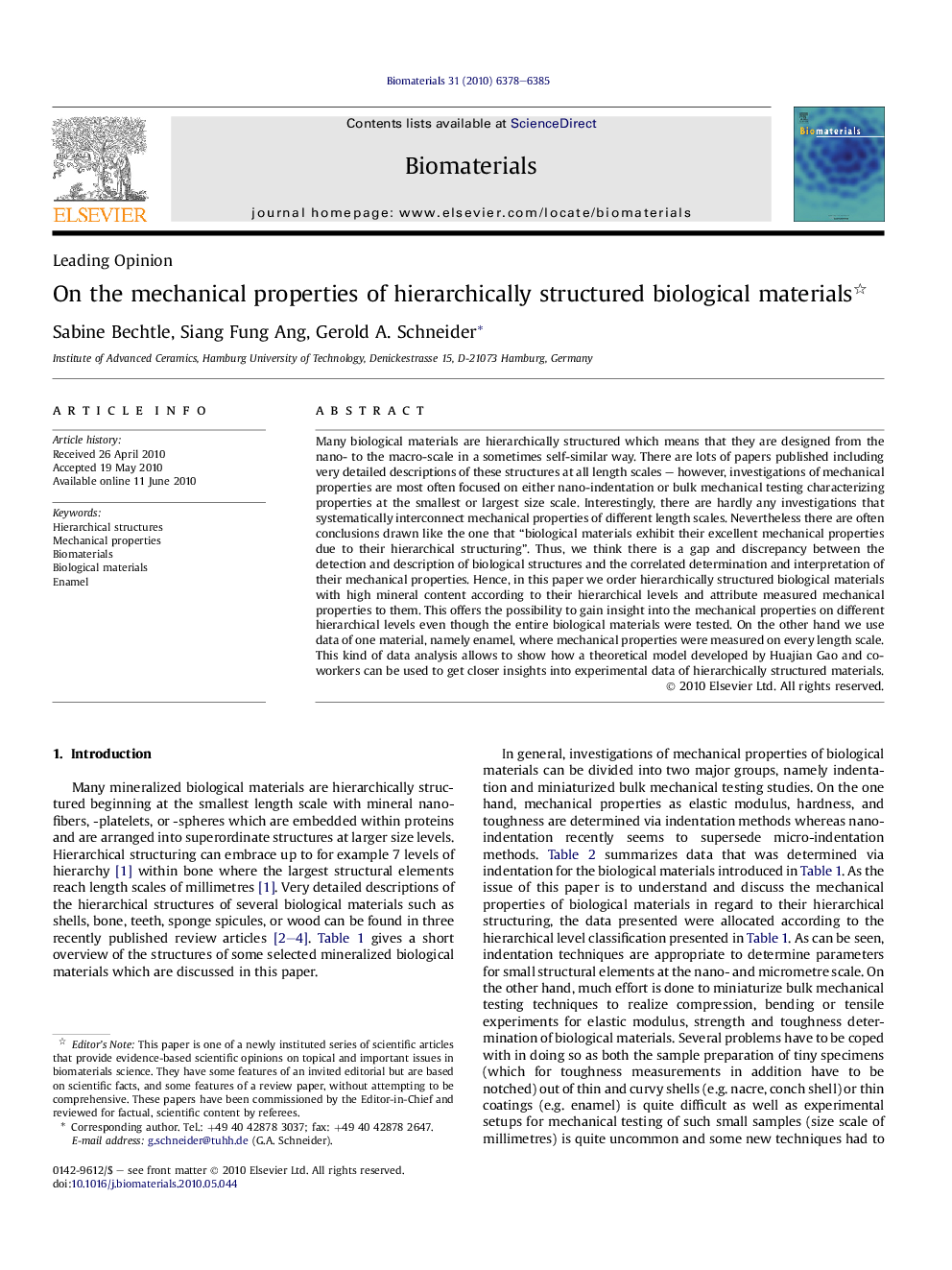| Article ID | Journal | Published Year | Pages | File Type |
|---|---|---|---|---|
| 9137 | Biomaterials | 2010 | 8 Pages |
Many biological materials are hierarchically structured which means that they are designed from the nano- to the macro-scale in a sometimes self-similar way. There are lots of papers published including very detailed descriptions of these structures at all length scales – however, investigations of mechanical properties are most often focused on either nano-indentation or bulk mechanical testing characterizing properties at the smallest or largest size scale. Interestingly, there are hardly any investigations that systematically interconnect mechanical properties of different length scales. Nevertheless there are often conclusions drawn like the one that “biological materials exhibit their excellent mechanical properties due to their hierarchical structuring”. Thus, we think there is a gap and discrepancy between the detection and description of biological structures and the correlated determination and interpretation of their mechanical properties. Hence, in this paper we order hierarchically structured biological materials with high mineral content according to their hierarchical levels and attribute measured mechanical properties to them. This offers the possibility to gain insight into the mechanical properties on different hierarchical levels even though the entire biological materials were tested. On the other hand we use data of one material, namely enamel, where mechanical properties were measured on every length scale. This kind of data analysis allows to show how a theoretical model developed by Huajian Gao and co-workers can be used to get closer insights into experimental data of hierarchically structured materials.
